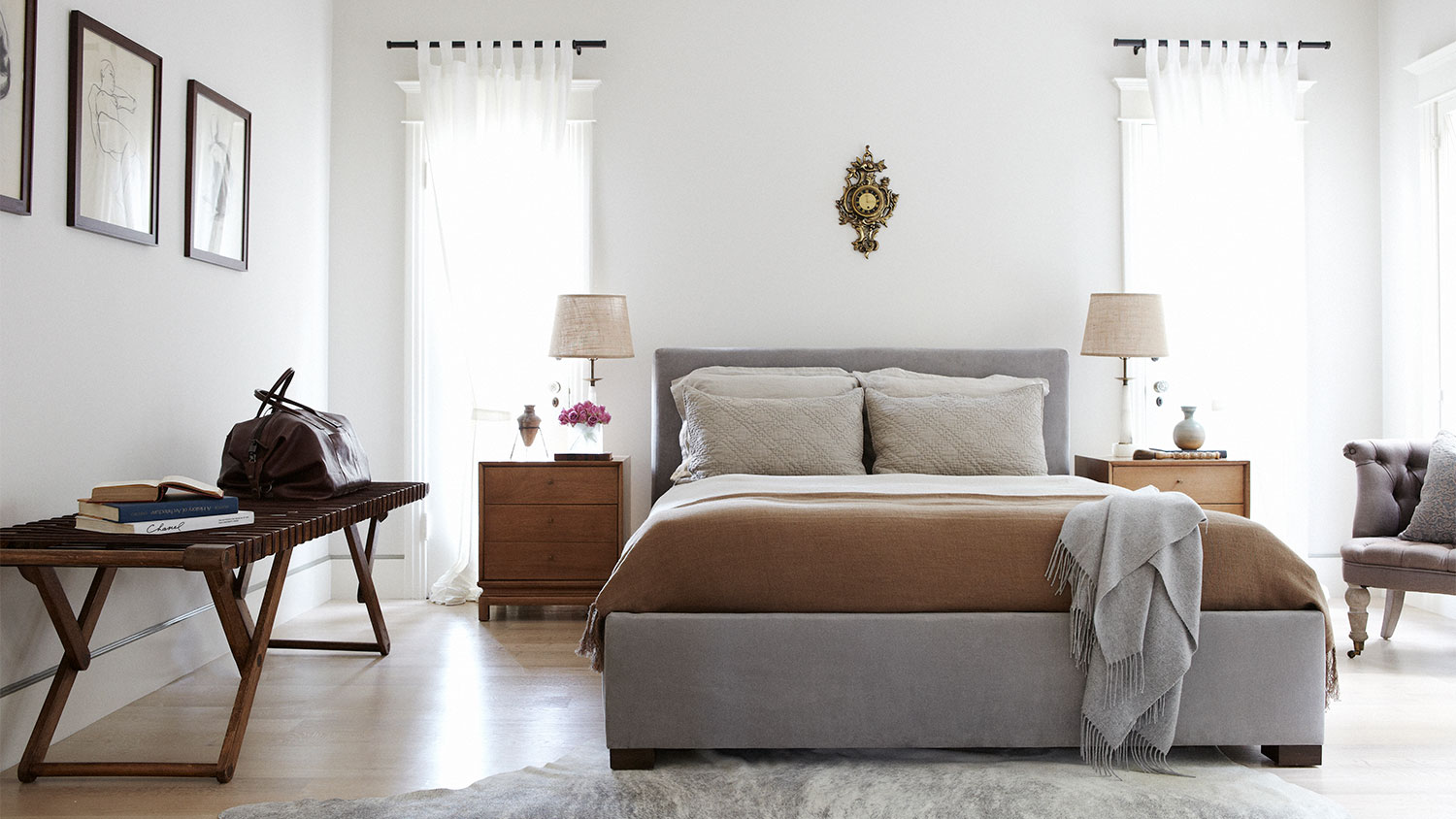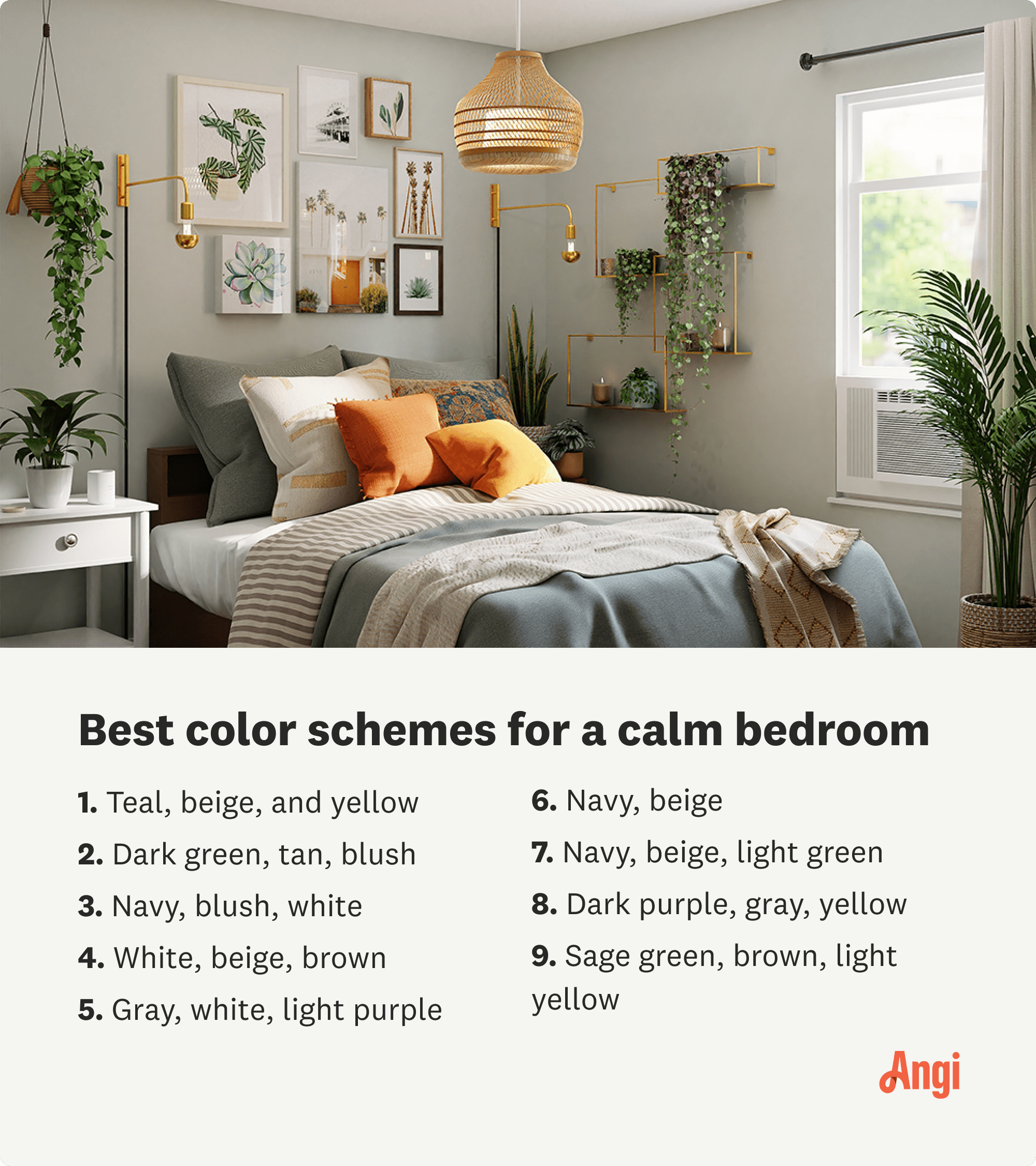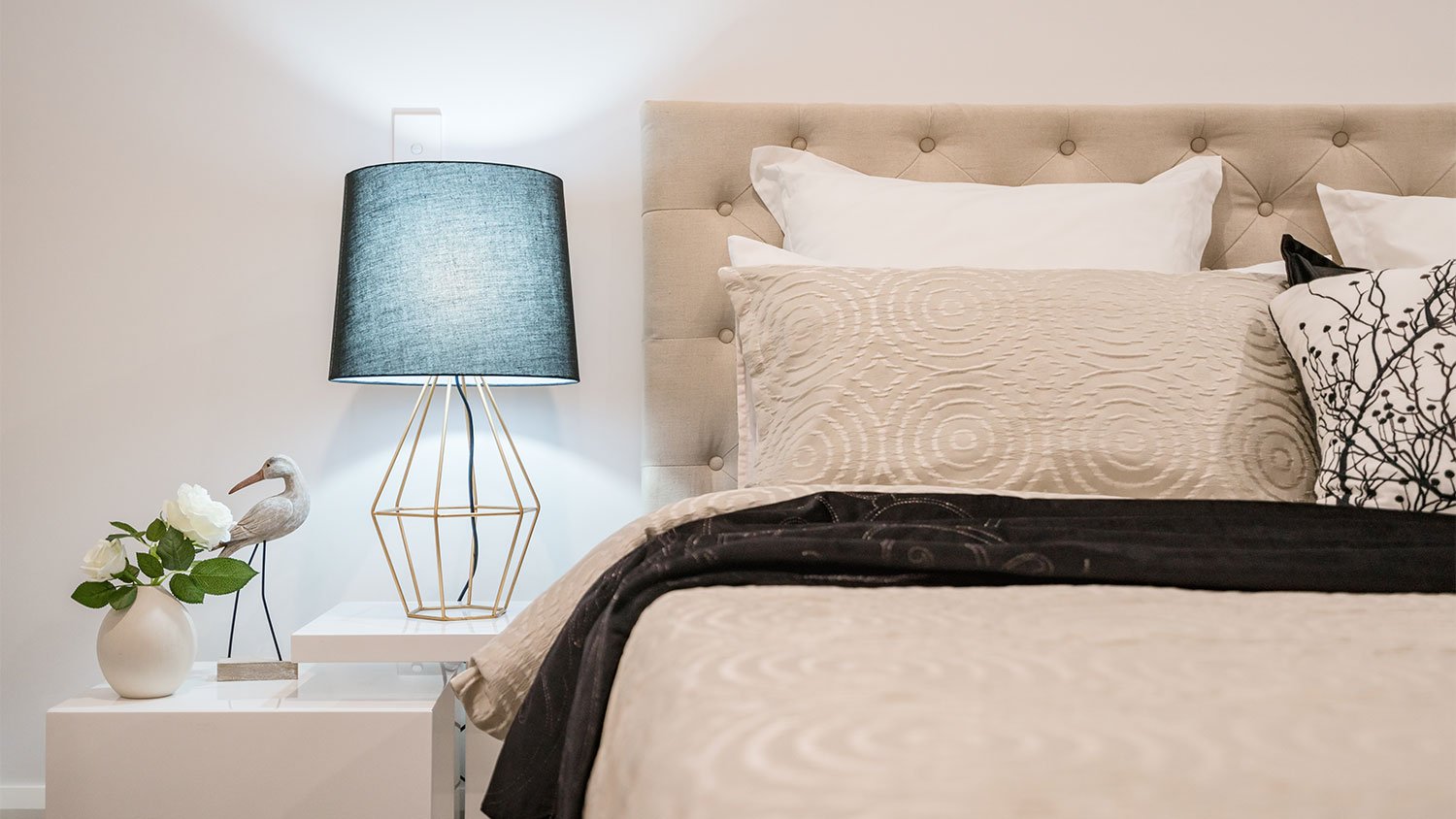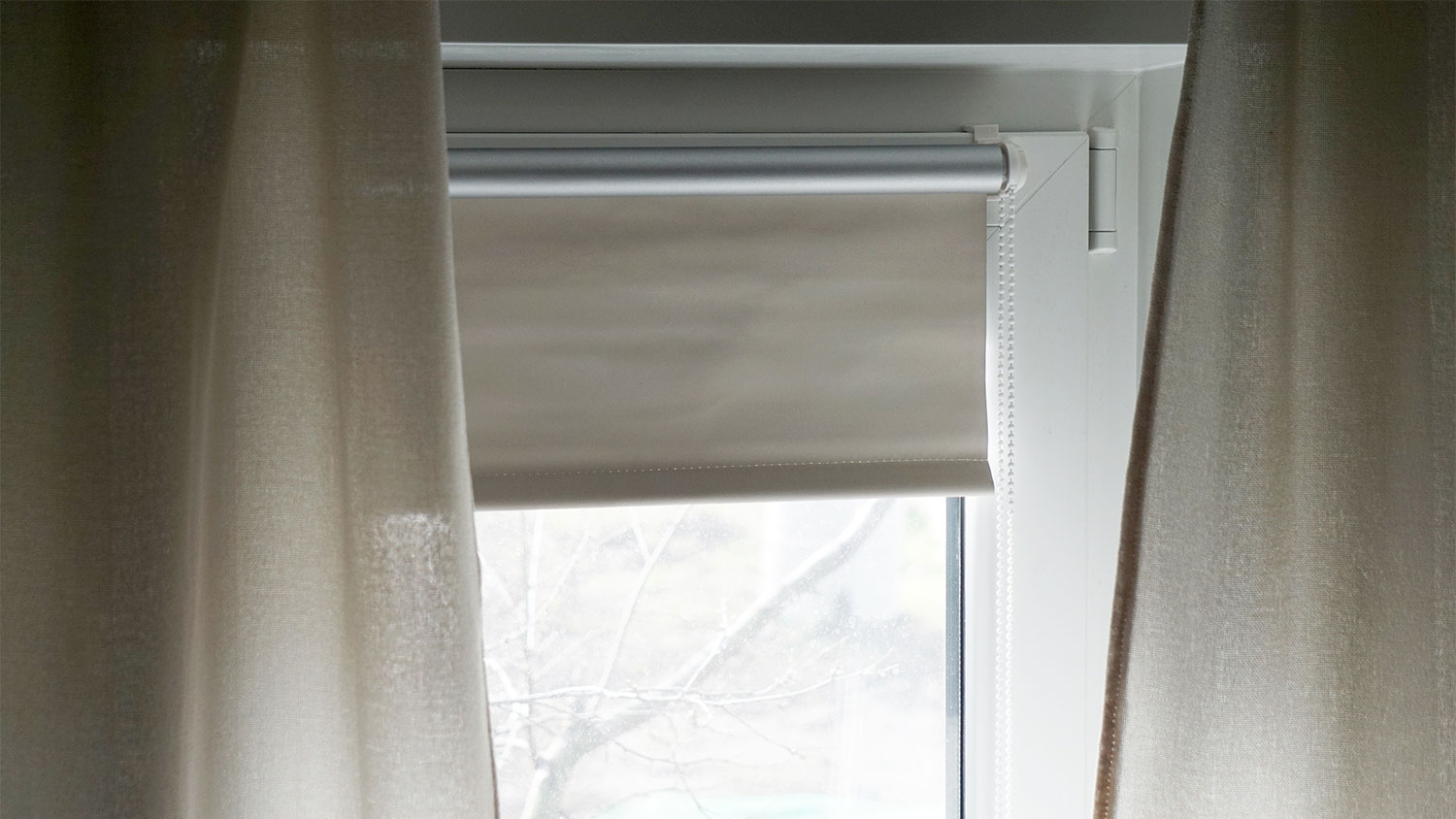
Discover the cost to design a bathroom, including key price factors, to help you plan your remodel with confidence and avoid budget surprises.
Sleep in a space tailored to you


When you head to bed and see mismatched decor, too-bold wall colors, or bright lights, it can make falling asleep difficult. Coming into your bedroom at the end of the day should feel relaxing, and this space should be a respite from whatever life throws your way. That’s why it’s important to know how to decorate a bedroom that will make you feel peaceful while also suiting your personal style. Here’s how.
Especially if you’re adding new furniture like a bed frame, nightstands, a dresser, or a vanity, you’ll need to break out the measuring tape and plan ahead.
To decorate small bedrooms, stick to smaller sizes of furniture to prevent the room from looking cramped. Concerned about storage? Don’t forget to make use of vertical space with shelving to make the most of a small bedroom.
For a large bedroom, make sure to go big when it comes to furnishings and decor. Small pieces of wall art or a short chest of drawers can make the room look overwhelming, creating a funhouse effect where the items inside look comically small. Opt for larger art canvases on the walls and taller and/or wider furnishings for the room.

Are you more beachy and boho or classic elegance? There are many ways to decorate, but you want to choose something that makes you feel at peace as soon as you step inside. So before you head out to buy furniture and decorations, you want to define your decor style.
For some people, that can mean glam decor complete with a sparkling chandelier and brass handles on dressers and end tables. For others, decor can evoke vacation vibes with seashell knick-knacks on wood shelves and oceanic art prints on the walls.
When it comes to picking a color scheme for a bedroom, it’s best to choose tones that make you feel calm, relaxed, and happy. Cool tones, like blues and natural shades of green are good options for bedrooms. If you’re looking for accent colors, consider pops of yellow to greet you when you wake up or blush and coral tones to resemble a sunset. Wrap everything up with neutral colors, like whites, grays, or beiges.

In addition to keeping the size of furniture in mind for your bedroom, also stick to furnishings that will make sense for the style, color scheme, and functionality of the room. In particular, don’t skimp on stowed away storage features, like drawers and cabinet doors, that can hide away stress-inducing clutter.
Instead of open cubbies, add bins to stash away items or choose a dresser with drawers to keep winter sweaters or bundles of socks hidden from plain view.

Bedroom lighting can be overlooked, but you want a variety of lighting options to match different times of day and moods. In the early morning, you may want lamps with soft lights to avoid waking your partner or brighter lights to help wake you up to start the day. In the evening, you’ll want warm-toned lighting that feels cozy to accompany bedtime reading.
Consider updating overhead lights and adding new lamps around the room or sconces over the nightstands. Pro tip: try connecting your lamps to smart plugs or buying smart light bulbs for home automation, so you can turn lights on or off without getting out of your warm bed.
Humans spend thousands of hours in bed sleeping, so it makes sense that your bedding should help promote a good night’s rest. When it comes to high-quality bedding, choose natural fabrics like cotton, linen, or bamboo. Linen and bamboo are great if you tend to feel overheated at night, while flannel sheets made with wool or cotton or even luxurious fabrics like cashmere can keep you toasty if you tend to run cold.

The windows in your bedroom can create a canvas for adding your personal style, but window coverings also provide a variety of functions. Breezy, sheer curtains let daylight stream in, while blackout curtains can improve your sleep and add privacy.
You may want to consider layers of window coverings, like blinds that can let light in or shut it out completely, plus neutral-toned or patterned curtains to tie together the rest of the room’s decor. If you have sheer curtains, consider blinds or shades that will block out light as needed. If you don’t have blinds or shades, opt for opaque curtains that will keep outside lights from disrupting your sleep.
For an extra punch of personality or to warm up the floor that will be beneath your feet when you get out of bed, add a large area rug beneath the bed. Even in small rooms, a big area rug will look great and helps tie furniture and decor together. Choose something that extends past the edges of the bed, but try to keep the area rug from sitting right up against any walls.
From average costs to expert advice, get all the answers you need to get your job done.

Discover the cost to design a bathroom, including key price factors, to help you plan your remodel with confidence and avoid budget surprises.

How much does an interior designer cost? Discover average prices, cost factors, and tips to help you budget for your next home design project.

The cost to replace trim depends on factors such as style, material, and whether you hire a pro. Find out what your budget could look like for this project.

If you’re getting ready to install some trim or molding inside your home, here are some of the questions you should expect to discuss with a pro.

Create a stunning and functional home or remodel with an interior designer. Follow these common interior design questions to prepare for working with a pro.

Reinvigorate your home with the summer-ready decor trends welcoming us into the sunniest days of 2025. Find your favorite among these top 10.